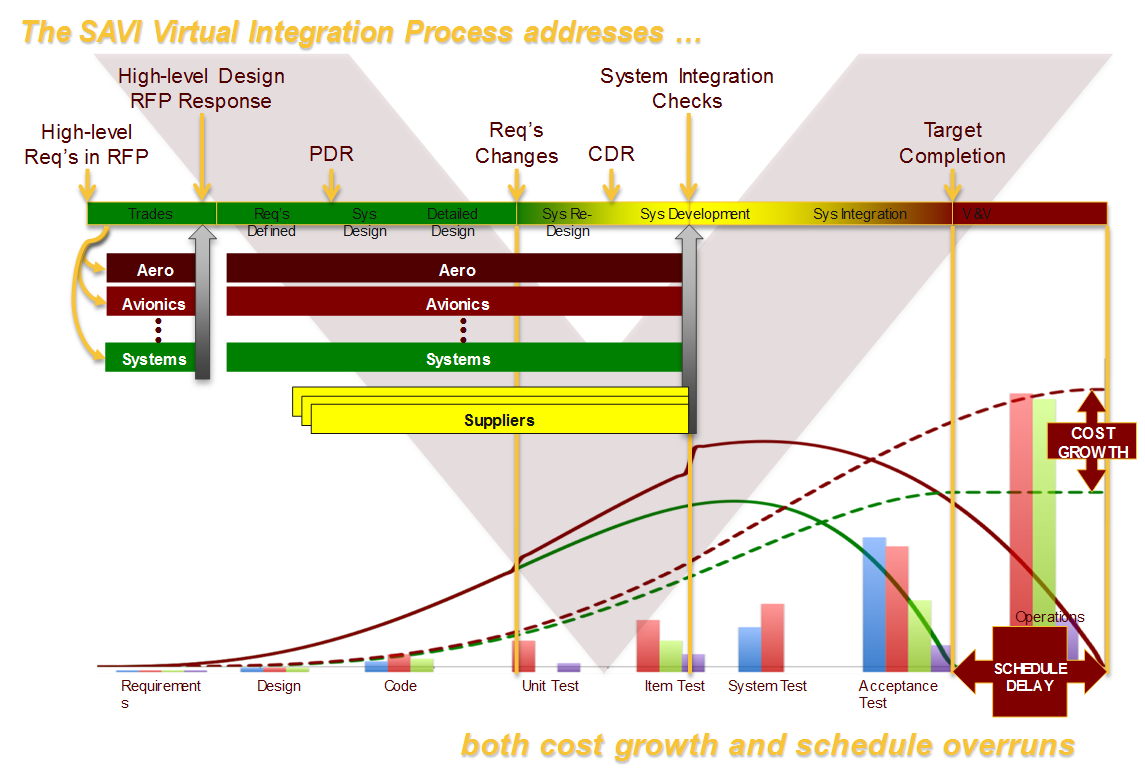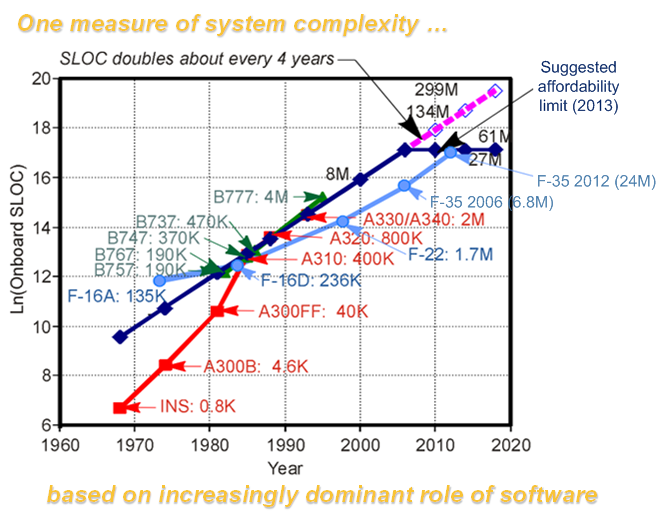SAVI Objectives
The SAVI Program is developing a virtual integration methodology that will manage complexity, lower cost and reduce time to market of new aerospace systems.
The SAVI objective is to
- Lower development cost of complex aerospace systems
- Eliminate errors
- Deliver the final product on schedule
SAVI Approach – Virtual Integration
We meet these objectives by using model-driven virtual integration that supports predictive modeling and analysis across a distributed heterogeneous set of development domains and environments.
Aerospace systems are designed and developed by a worldwide network of enterprises and companies. Each brings a variety of expertise, tools and approaches to the process. It is an environment that offers many advantages, but has the disadvantage of making development prone to inconsistency.
The SAVI approach begins during early requirements definition and continuously monitors system evolution for inter-model consistency. It uses new tools, standards, and processes to detect and correct errors and defects much earlier in the development cycle than is possible with a traditional integration approach. SAVI starts integrated, stays integrated.
SAVI Motivation
Driven by advanced requirements for function, safety, robustness and performance, the complexity of modern aerospace systems is increasing exponentially in multiple areas. Systems require mixed capabilities often involving hydraulics, mechanical, software, network and optical designs.
This assertion is validated when we look at one measure of complexity, the number of source lines of code (SLOC) aboard aircraft. Although other attributes such as required reliability and interoperability affect complexity, SLOC is a readily available and often used complexity metric that strongly correlates with complexity in other areas of system design. Viewing SLOC aboard aircraft over time shows a rapid exponential increase.
Development effort, which increases exponentially with SLOC, is increasing at an alarming rate. For example, the F35 has approximately 175 times the number of SLOC as the F16. But, it is estimated to have required 300 times the development effort. As shown in the figure, new aircraft costs will reach an affordability limit beyond which development will not be economically feasible.
The SAVI program is committed to developing a virtual integration methodology to manage complexity and reduce development effort.



